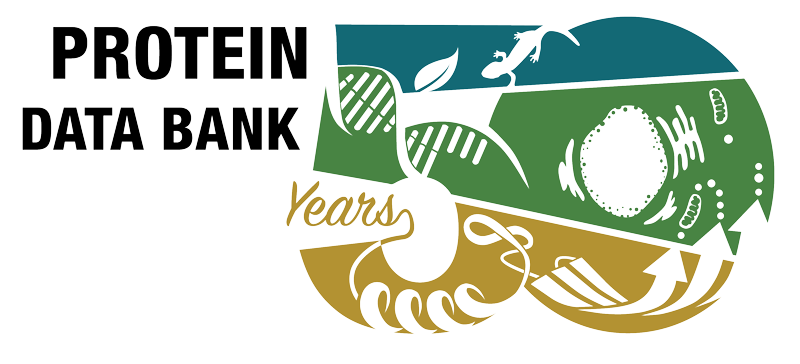Reviews - 4dri mentioned but not cited (3)
- Roles of Prolyl Isomerases in RNA-Mediated Gene Expression. Thapar R. Biomolecules 5 974-999 (2015)
- Allostery: Allosteric Cancer Drivers and Innovative Allosteric Drugs. Nussinov R, Zhang M, Maloney R, Liu Y, Tsai CJ, Jang H. J Mol Biol 434 167569 (2022)
- Drug Discovery of Plausible Lead Natural Compounds That Target the Insulin Signaling Pathway: Bioinformatics Approaches. Shanak S, Bassalat N, Barghash A, Kadan S, Ardah M, Zaid H. Evid Based Complement Alternat Med 2022 2832889 (2022)
Articles - 4dri mentioned but not cited (22)
Reviews citing this publication (16)
- Interventions to Slow Aging in Humans: Are We Ready? Longo VD, Antebi A, Bartke A, Barzilai N, Brown-Borg HM, Caruso C, Curiel TJ, de Cabo R, de Cabo R, Franceschi C, Gems D, Ingram DK, Johnson TE, Kennedy BK, Kenyon C, Klein S, Kopchick JJ, Lepperdinger G, Madeo F, Mirisola MG, Mitchell JR, Passarino G, Rudolph KL, Sedivy JM, Shadel GS, Sinclair DA, Spindler SR, Suh Y, Vijg J, Vinciguerra M, Fontana L. Aging Cell 14 497-510 (2015)
- Gene-environment interactions at the FKBP5 locus: sensitive periods, mechanisms and pleiotropism. Zannas AS, Binder EB. Genes Brain Behav 13 25-37 (2014)
- Dissecting fibrosis: therapeutic insights from the small-molecule toolbox. Nanthakumar CB, Hatley RJ, Lemma S, Gauldie J, Marshall RP, Macdonald SJ. Nat Rev Drug Discov 14 693-720 (2015)
- FKBP Ligands-Where We Are and Where to Go? Kolos JM, Voll AM, Bauder M, Hausch F. Front Pharmacol 9 1425 (2018)
- Peptidyl-Proline Isomerases (PPIases): Targets for Natural Products and Natural Product-Inspired Compounds. Dunyak BM, Gestwicki JE. J Med Chem 59 9622-9644 (2016)
- The Many Faces of FKBP51. Hähle A, Merz S, Meyners C, Hausch F. Biomolecules 9 E35 (2019)
- Next Generation Strategies for Geroprotection via mTORC1 Inhibition. Dumas SN, Lamming DW. J Gerontol A Biol Sci Med Sci 75 14-23 (2020)
- Focus on FKBP51: A molecular link between stress and metabolic disorders. Häusl AS, Balsevich G, Gassen NC, Schmidt MV. Mol Metab 29 170-181 (2019)
- Peptidyl-prolyl isomerases: functionality and potential therapeutic targets in cardiovascular disease. Rostam MA, Piva TJ, Rezaei HB, Kamato D, Little PJ, Zheng W, Osman N. Clin Exp Pharmacol Physiol 42 117-124 (2015)
- The Relevance of Mass Spectrometry Analysis for Personalized Medicine through Its Successful Application in Cancer "Omics". Ciocan-Cartita CA, Jurj A, Buse M, Gulei D, Braicu C, Raduly L, Cojocneanu R, Pruteanu LL, Iuga CA, Coza O, Berindan-Neagoe I. Int J Mol Sci 20 E2576 (2019)
- FK506-binding protein 12 ligands: a patent review. Liu F, Wang YQ, Meng L, Gu M, Tan RY. Expert Opin Ther Pat 23 1435-1449 (2013)
- Regulation of the Target of Rapamycin and Other Phosphatidylinositol 3-Kinase-Related Kinases by Membrane Targeting. De Cicco M, Rahim MS, Dames SA. Membranes (Basel) 5 553-575 (2015)
- Conformational Dynamics in FKBP Domains: Relevance to Molecular Signaling and Drug Design. LeMaster DM, Hernandez G. Curr Mol Pharmacol 9 5-26 (2015)
- Analysis of the Selective Antagonist SAFit2 as a Chemical Probe for the FK506-Binding Protein 51. Buffa V, Knaup FH, Heymann T, Springer M, Schmidt MV, Hausch F. ACS Pharmacol Transl Sci 6 361-371 (2023)
- Peptidylprolyl Isomerases as In Vivo Carriers for Drugs That Target Various Intracellular Entities. Galat A. Biomolecules 7 E72 (2017)
- Molecular chameleons in drug discovery. Poongavanam V, Wieske LHE, Peintner S, Erdélyi M, Kihlberg J. Nat Rev Chem 8 45-60 (2024)



 PMID:
PMID: 